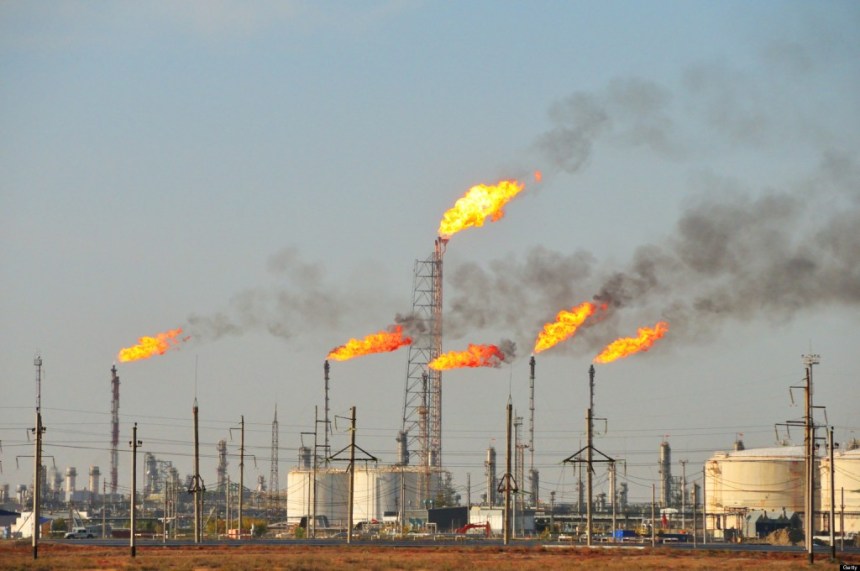Table of Contents
The dizzying ascent of global stocks has unnerved City analysts in recent months, as lofty valuations and the prospect of interest rate hikes threaten to spark a major sell-off.
The MSCI All-Country World Index, a gauge of global stocks, set a new peak last month.
Earlier this week, the Dow Jones stormed to a fresh record high, while London’s benchmark FTSE 100 and the German DAX hit all-time highs in June.
Even disappointing macroeconomic data fails to deter the relentless drive higher in stock markets, as investors continue to pile into stocks with overstretched valuations.
Since the immediate aftermath of the Brexit vote, the FTSE 100 has rallied 24pc, rising almost 4pc so far this year, while Dow Jones has gained 20pc since Donald Trump’s US election win.
Since January, the benchmark US index has jumped almost 9pc. As stock markets scale new peaks, is a major crash around the corner?
What is a stock market crash?
Quite simply, it is a sudden dramatic drop in stock prices across a significant cross-section of a stock market. While there is no specific threshold for stock market crashes, they are typically defined as a fall of more than 10pc in a stock index over the course of a day or two.
How does a crash differ from a ‘correction’?
The speed of the decline is what differentiates a crash from a stock market correction. While a crash occurs when markets experience a sudden double-digit drop in a couple of days, a correction occurs when prices fall by 10pc or more from the index’s 52-week high.
A trip down memory lane….
1929: The Great Depression
In the worst stock market crash in US history, the Dow Jones plunged 25pc in just four days, starting on October 24. It wiped out $30bn in market value. The Dow continued its descent until July 1932, when it bottomed out nearly 90pc lower from its 1929 highs.
1987: Black Monday
The Dow Jones dropped 22.6pc in a single trading session. $500bn was lost in one day.
The benchmark US index rallied by almost 45pc in the run-up to the crash, stoking fears of an asset bubble.
2000: The Tech Bubble
The tech-heavy Nasdaq surrendered 78pc of its value. The US index surged in the mid-1990s fueled by investments in internet-based companies, which investors hoped would one day turn a profit. Overconfidence, pure speculation and the failure of dotcom companies to perform caused the bubble to burst. Former Fed chair Alan Greenspan famously dismissed the stock market bubble as “irrational exuberance”.
2007/8: The Great Recession
A housing boom, rampant real estate speculation and excessive consumer spending categorised the most recent titanic moment. It came to a head on September 29, 2008 when the Dow Jones plunged 777.68 points in intraday trading after the US government rejected a $700bn financial rescue package designed to rescue the US economy and stabilise global stock markets. Two weeks earlier, the US government had allowed Lehman Brothers to go bankrupt.
What causes a stock market crash?
Ask City experts what causes a stock market to plunge and you’ll get a dozen different answers. A deluge of academic research also fails to deliver a conclusive answer. Taking that into account, here’s some of the contributing factors that lead to a stock market crash:
Market psychology
Conventional financial theory suggests market players behave rationally, failing to account for investor sentiment, which can drive stock prices higher or lower. Greed, fear and expectations all contribute to investor sentiment. Periods of strong optimism among investors can artificially inflate stock prices, which creates a ‘bubble’ and subsequently has the potential to burst, causing share prices to plummet.
Widespread panic
A stock market crash is exacerbated by panic. Typically, investors who think the market is about to falter begin to dump stocks in an effort to avoid losing money. But as the speed of the share price slide accelerates, panic begins to grip the market causing others to follow suit. As everyone moves to offload stocks, supply exceeds demand causing prices to plunge across the entire stock market.
Research conducted by Nobel Prize-winning economist Robert Shiller on investor behaviour in the 1987 stock market crash found that there was “a great deal of investor talk and anxiety around October”.
Major events
Major world or geopolitical events can weigh heavily on investor confidence, prompting them to offload risky assets in favour of safe plays, such as gold or bonds. Unprecedented events can trigger panic-induced selling that creates a stock market crash.
The Dow Jones fell by as much as 7.52pc in intraday trading on September 17 when Wall Street reopened following the 9/11 terror attacks.
Tightening of monetary policy
Central banks have rattled markets as they discuss withdrawing stimulus and hiking interest rates. Hawkish rhetoric from European Central Bank president Mario Draghi, Bank of England policymakers and the Fed has rocked investor sentiment in recent weeks. The ECB has confirmed it wants to taper quantitative easing – or electronic printing of money – and the US central bank wants to wind down its balance sheet.
In a recent note to clients, Bank of America Merrill Lynch investment strategist James Barty said: “Markets do not like the sound of this. The central bank ‘put’ is being withdrawn and the knee-jerk response is one of concern. Bund yields have spiked from under 25bp to 57bp since the comments and the European equity market has had a distinct wobble. The US and emerging markets have joined in, albeit to a lesser extent.”
But we’ve been here before: Mr Barty points to the taper tantrum of 2013, when bond and equity markets fell sharply. However, BAML believes if growth holds up in the global economy, tighter policy won’t bring markets crashing down.
US investment bank Citi earlier this week also suggested that monetary policy could pose a threat if “central banks are perceived to be ahead of the curve”, as they believe that would negatively impact investor confidence.
Overstretched valuations
Market valuations are overstretched. Using the metric developed by Professor Shiller and John Campbell, the cyclically adjusted price to earnings ratio or “Cape” – which compares a share price with the earnings of the company concerned over the past 10 years, adjusted for inflation – shows today’s valuations have been surpassed only during the build-up the dotcom bubble and 1929 Wall Street crash.
Lofty valuations are a common theme before previous market crashes. Earlier research conducted by Professor Shiller found that buyers and sellers generally thought the market was overvalued before the 1929 collapse.
On another measure, the S&P 500’s price-earnings ratio – which compares a company’s share price with its earnings over the past 12 months – is 17.5 times forward 12 months’ earnings.
Meanwhile, a record number of professional investors think that world stocks are more “overvalued” now than during the 1999 tech bubble, a Bank of America Merrill Lynch fund manager survey showed last month.
After surveying 210 global fund managers with $596bn assets under management in June, BAML found a net 44pc of investors said equities were overvalued, up from a net 37pc last month, and beating the previous record high set in 1999’s dotcom bubble.
Separately, a report released by JP Morgan earlier this week revealed that analysts are concerned that second-half earnings may not be as robust as previously expected.
The US investment bank warned: “We note that in the US, the negative to positive earnings pre-announcement ratio is down to 1.9x, its lowest level in six years.”
Analysts at the bank believe price-earnings ratios are vulnerable to a slowdown in earnings growth, highlighting that world price to earnings is 26pc more expensive than it was ahead of the Fed’s QE taper in 2013.
Asset bubbles
Asset bubbles occur when prices become over-inflated, rising much faster than an asset’s real underlying value. When that happens a bubble forms and can often be followed by a bust.
Last month, gripped by fears that the technology sector is in a “bubble”, tech stalwarts suffered a sharp sell-off following a bearish Goldman Sachs note on the sector.
A survey of professional investors conducted by Bank of America Merrill Lynch found that three-quarters of respondents said US and global internet stocks were either “expensive” or “bubble-like”. The tech-heavy Nasdaq was seen as the “most crowded trade”, BAML found.
Data showed that most money managers were “overweight” – or had a “buy” recommendation – on the so-called “FANG stocks” of Facebook, Amazon, Netflix, and Google.
Global economic slowdown
Signs of increased volatility across a number of risk assets and emerging markets are beginning to rattle investors. Earlier this week, Citigroup warned that stock markets could be at risk of falling if there is a global economic slowdown.
Investors should remain wary as strategists point to the potential for slower momentum in China and mixed macroeconomic data from the US.
Algorithmic trading
While it has been around for a long time, algorithmic trading has taken a significant share of trading activity in recent years. Algos can often cause or at least accelerate dropping prices in markets, as there is no human input.
For example, last October’s “flash crash” in sterling was caused by a combination of inexperienced traders, algorithmic trading and complex trading positions, a report from the international banking body the Bank for International Settlements found.
Are we heading for another titanic moment?
History suggests that stock markets always rally strongly before a crash. While that it easy to recognise, other contributing factors can be harder to identify.
Last month, Fed chair Janet Yellen said she believed we will not see another major financial crisis “in our lifetime” because banks are stronger. But not everyone is in agreement.
Swiss investor Marc Faber, the man known as “Dr Doom”, predicts that stocks will plunge by 40pc or more. Mr Faber, the editor of ‘The Gloom, Boom & Doom Report’ and a perennial bear, told CNBC recently: “We have a bubble in everything.”
Recently, Professor Shiller urged investors to tread cautiously because market valuations are at “unusual highs”.
In a recent interview with CNBC, he said: “We are at a high level, and it’s concerning,” highlighting that the only times valuations have been higher were in 1929 and 2000.
With fears growing of tech bubble 2.0, Bank of America Merrill Lynch attempted to assuage investors’ fears. In contrast to the 2000 tech bubble, strategists at the US investment bank reckon valuations “ain’t irrational yet”.








